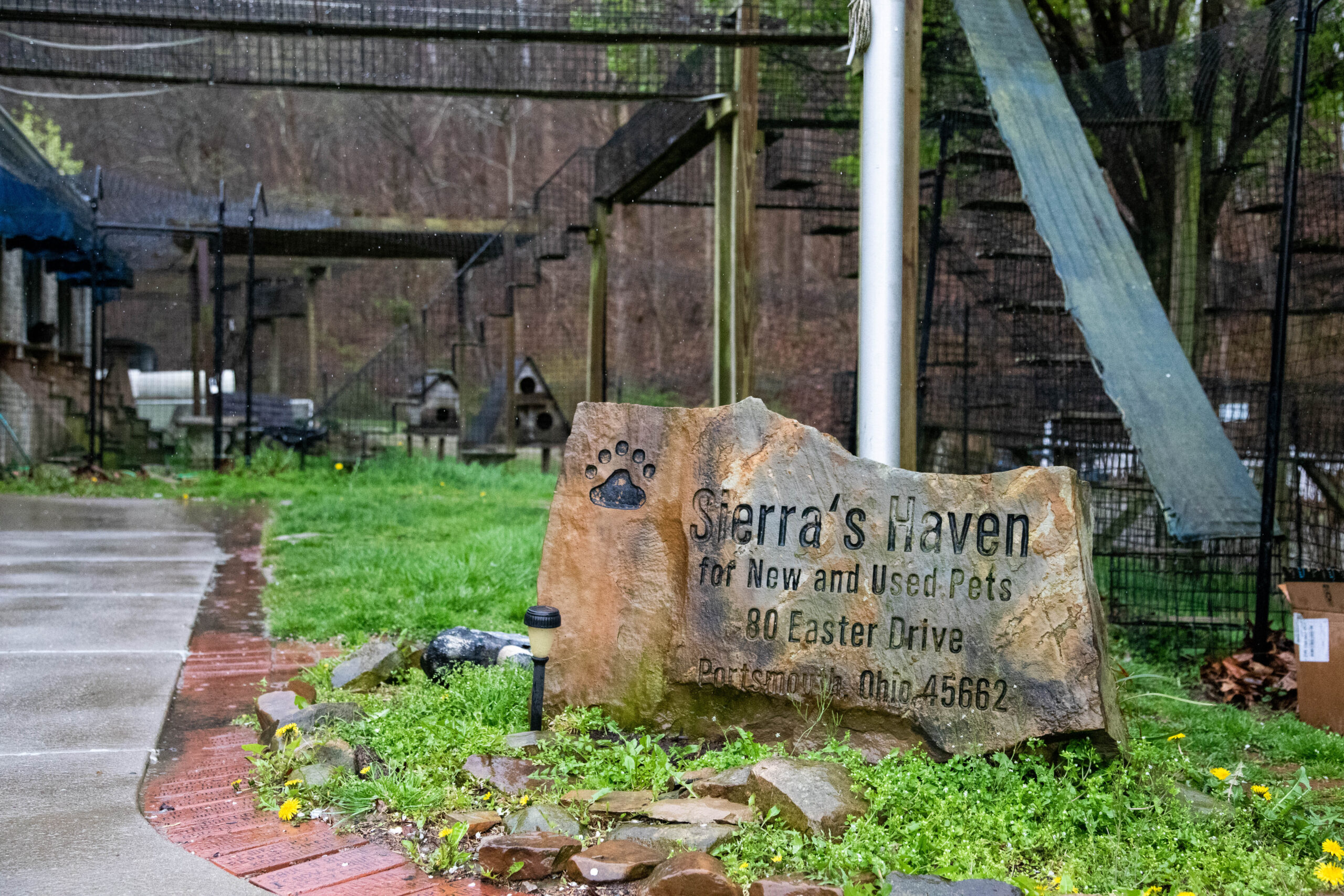
Photo By: Carrie Legg
Wilbur’s Rescue
After a rough weekend, Wilbur had a great Valentine’s Day.
He was covered in mud and poop, thrown in a burlap sack and abandoned shortly after birth. Fortunately, things turned around. Wilbur was rescued and taken to Sierra’s Haven in Scioto County. He could not stay there for very long because he is a pig, and Sierra’s Haven is designed for cats and dogs.
Chrystal Brown-Dixon, shelter supervisor, took him in and cleaned him up. Wilbur took quite a liking to Brown-Dixon in the short time he was there. After all, he went from starving in a sack to being fed, cleaned and loved.
On Valentine’s Day, Linda Cottle, a volunteer for the shelter, transported him to Homeward Bound Animal Rescue in Adams County. If it weren’t for these two and the other staff at Sierra’s Haven, Wilbur would not have been saved. The same is true for so many other animals.
About Sierra’s Haven
Dr. Gail Counts founded Sierra’s Haven in 2006. The not-for-profit has saved over 20,000 cats and dogs. Counts is still the executive director to this day.
“I just never thought it would ever be as big as it is, being able to house this many animals and actually move them,” Counts says.
Sierra’s Haven has a nice piece of flat land in the hills. It does not take long to hear the dogs outside when arriving. Most of the animals, with some exceptions for the young and sick, have cages or rooms that lead outside. They love going outside, even in frigid weather.
Sierra’s Haven has another building called the Puppy Pavilion. The dogs inside and outside bark less than those in at the other building — but just barely.
Facebook Page
Sierra’s Haven has an active Facebook page. The page has over 20,000 followers and posts multiple updates per day. Cottle runs the Facebook and helps with transports.
“Facebook consumes my every waking moment,” Cottle says, “From the time I get up in the morning to the time I go to bed, which causes my husband a lot of grief.”
The Facebook page helps animals move to different shelters or find owners who fall in love with them.
“As our Facebook page grew and more people shared posts, then other rescues in the Columbus area and around the state would see our posts and offer to help,” Cottle says.
How the shelter makes money
There are a few ways that the shelter makes money.
- Adoptions
- Fundraisers
- Grants
Regarding adoptions, each animal is different. It can be difficult to find the right owner for some. A German shepherd will be at the shelter for two years in July 2022.
“Some people come expecting to just click with an animal, and you have an animal like that [the German shepherd] who doesn’t like strangers. So, you have to come visit him several times, but we’ll find him somebody,” Brown-Dixon says.
Regarding fundraisers, they had to be canceled at the start of the pandemic. Now, they are finally back. At its Pot of Luck fundraiser in the spring, people donate items and participate in an auction to purchase them.
Regarding grants, PetSmart Charities has helped Sierra’s Haven with over $325,000 in grants in the last 10 years, according to Sierra’s Haven’s website. Grants are how the Puppy Pavilion got built.
Major challenges
Still, the not-for-profit faces a set of major challenges. The volume of stray animals in the county dominates conversation. In Southeast Ohio, it’s literally raining cats and dogs. Despite Cottle transporting over 1,000 animals in 2021, Sierra’s Haven still operates around max capacity.
On Jan. 24, Portsmouth City Council passed an ordinance prohibiting feeding stray animals and pigeons. A $50 fine is the maximum penalty for the first offense.
“People tend to place blame other places, and we’re only so big,” Brown-Dixon says. “We can only take in so many cats. Ultimately, we need a spay-neuter program in this area.”
Sierra’s Haven only has one veterinarian: Dr. Counts, but she is a full-time veterinarian elsewhere. Counts comes to Sierra’s Haven on Wednesdays. She has always tried her best to make spays and neuters affordable, as low as $20 for low-income families.
“I pretty much committed that I didn’t want any pets going out of there without being spayed or neutered because that would just add to the overpopulation problem in our county,” Counts says.
Labor shortages have been a continuous problem. Volunteers and minimum-wage workers handle a lot of the work. Counts has also made an effort to make work available for those who have faced drug addiction.
“Because we’ve got such a bad opioid problem in the county or Southern Ohio period, I believe in second chances, so we end up hiring a lot of people that have gone through the rehab system,” Counts says.
After 40 years of being a veterinarian, the 68-year-old Counts still loves working with the animals.
“To me, it’s just the biggest reward. To see the pups go home, especially the long-termers or the dogs that we’ve just about given up on, and to see somebody come in and the animal just loves them, it warms my soul to see that,” Counts says.